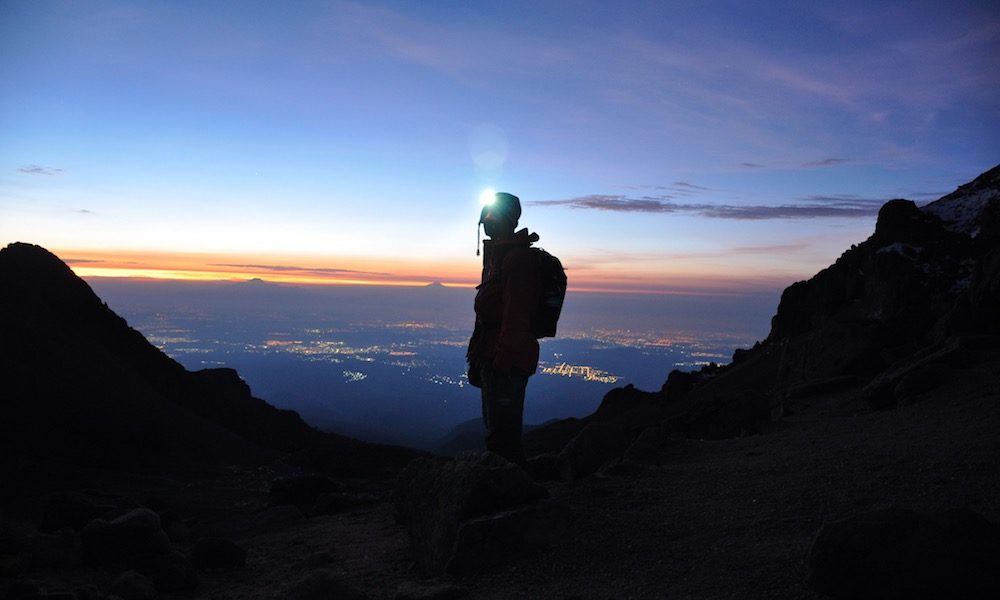How bright does your headtorch need to be? USB rechargeable or normal batteries? What about beam patterns? How much burn time do you really need? How do you choose a headtorch for multi-day trips, treks and expeditions? Do you need multi-coloured beam options? How about reactive lighting? Do you need any special features for winter use?
Back in the day, headtorches were simple. There was pretty much one option – the Petzl Zoom – a clunky, low-powered thing that took a weird, expensive square 9V battery and produced a short-lived pool of soupy, orange light. You either had one or you didn’t. Fast forward 20 years and there’s a twinkling constellation of torches to choose from, virtually all based on LED technology and covering all bases. It’s all a bit bewildering, so how do you choose?
HOW MUCH LIGHT DO YOU NEED?
Headtorch output is generally quoted in lumens – not to be confused with lupines, which are flowers – and the more of them you get, the brighter the torch. For most uses, you can get away with a surprisingly limited amount of light. The lowest setting on the Petzl Swift RL I’ve just reviewed, in standard mode, is only 10 lumens, but that’s enough to get by around camp for cooking and reading and will give you an estimated 100hrs of light. For walking on even surfaces you can just about get away with that too, but slightly more is better. From there on, more is better, but 200 lumens, is in my experience, enough for pretty much all off-road walking – coincidentally that’s the output of Petzl’s brilliant little rechargeable 35g Bindi at full whack. Black Diamond’s 56g Iota is slightly less bright at 150 lumens, but again does a similar close-up job.
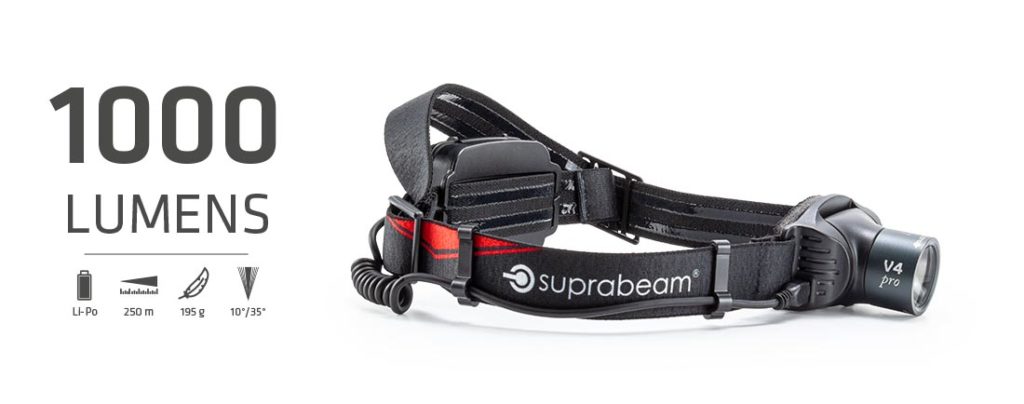
Do you really need 1000 lumens for your activity?
Longer range stuff – say you want to spot a distant trig point, gate opening or plan a line through a scrambly section of craggy terrain – needs more power, but also a spottier beam. More on that in a sec, but 500 or so lumens is enough for pretty much most normal use. Where things get interesting is running across genuinely rugged terrain at speed. This is where 800-lumen plus lights come into their own, though again beam pattern makes a huge difference. You can run with less light, but on technical terrain, moving fast, more is bluntly better. If you do plump for a super-powerful light, but also want to use it around camp or for steady walking on even terrain make sure it has enough adjustability to suit low level use as well as full-power scenery incineration mode.
Gearhead Takeway – More is better as you move faster, but sometimes less is also more.
WHAT ABOUT BEAM PATTERNS?
Outright power is one thing, but for running use in particular, I’ve found that a huge, even, floody spread of light that illuminates as much of your immediate surroundings as possible works best. Try running with a spot and you’ll find yourself constantly off balance because, I think, of the absence of visual reference points. The downside to that is decreased range for looking into the distance for routing options. The best running torches from Petzl and Silva mix simultaneous flood and spot beams to give a best of both worlds scenario and work well. The other option is a zoomable beam, usually operated by a twist of the bulb housing which gives both a wide, flood pattern and a penetrating spot-beam from the same headtorch. Check out Alpkit’s Quark, some of the LED Lenser options or the Danish Suprabeam lights. The downside is that you need to manually adjust the beam and you can’t have both at the same time. If you’re a serious off-road, night-time runner, mixed beams are probably your best option. For walking use, again a wide beam feels more stable, but it’s less crucial than with running. Again for picking out landmarks for navigation, a strong spot helps. Climbing and mountaineering again works well with options for both – where’s that abseil station or belay point?
Gearhead Takeaway – Power is nothing without beam control.
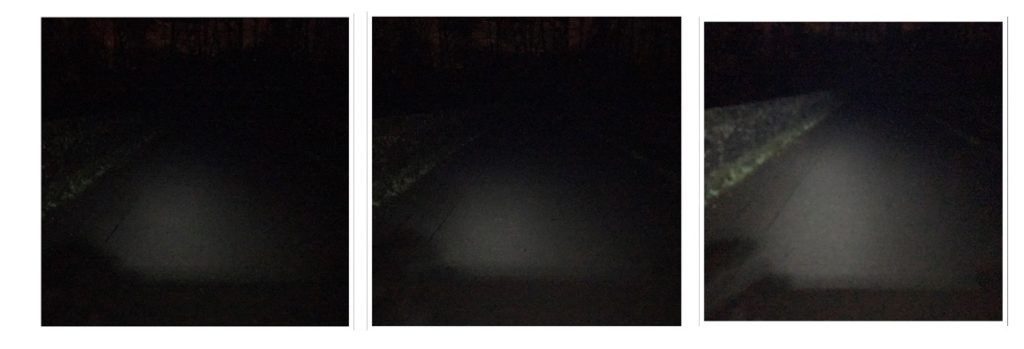
Beam pattern is as important as out and out power
HOW MUCH BURN TIME DO YOU NEED?
Simple answer – how long are you planning to be out cumulatively. If it’s only an hour or two thanks to a late start then something like a Bindi should manage happily even at full whack – two hours claimed. If you’re pulling an all-nighter, you’ll need more burn, obviously. Don’t assume the official burn times are correct though. Do some experimentation and, if you’re light critical, consider carrying a back-up headtorch or choose a light like the Swift RL that has a low-level reserve back-up that activates when your battery is almost done. Or if you have a battery-powered torch, carry spares.
Gearhead Takeaway – Don’t assume the figures on the box are correct and consider carrying a back-up just in case.
WHAT’S REACTIVE LIGHTING?
The best known example of headtorches that vary output according to need are Petzls using their Reactive Lighting system. It uses a sensor to detect ambient light then adjusts the output of the headtorch to suit. So if you look at the ground directly in front of you, reflected light tells the torch to reduce output. Look into the distance and it automatically increases output so you can see further. In use it works very well and has the bonus of increasing burn time. It can get slightly fazed by fog, snow and close-up objects, but mostly it’s excellent and highly recommended. Bear in mind you can always switch it off and just resort to standard, constant output mode.
Gearhead Takeaway – What’s not to like. More light when needed and better burn times too.
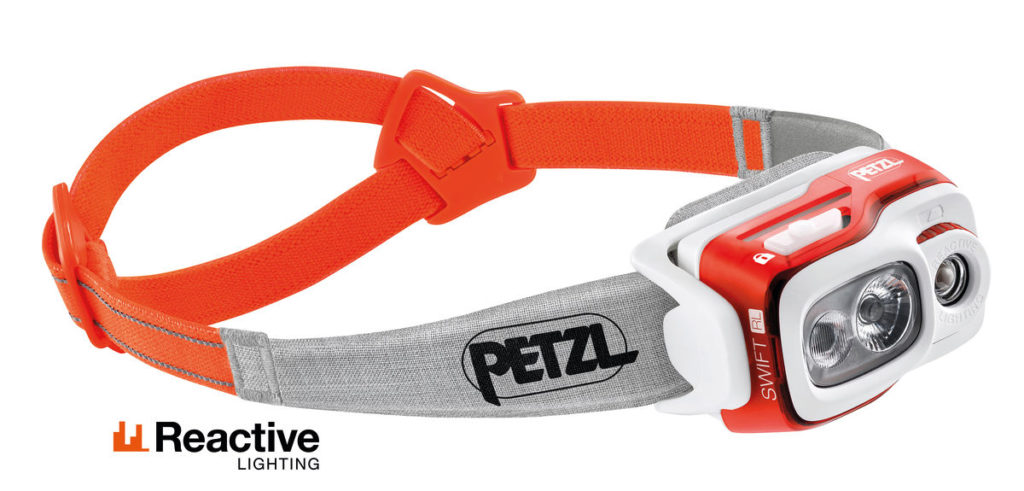
Petzl’s Reactive Lighting is a genuine innovation
USB CHARGING OR REPLACEABLE BATTERIES?
If you’re using your headtorch directly from home or somewhere else with a reliable source of USB power then, in my experience, a headtorch with an integral USB-charged battery is a no-brainer. For multi-day trips or ultra races where you may not have accessible recharging options, a headtorch that takes conventional AA or AAA batteries may be a better option. Somewhere in the middle are USB-charged units, that allow you to insert a spare USB battery. Somewhere in the middle are a few models that give you the option of removing the USB unit and slotting in normal cells – hello Alpkit Quark again – or charging AAA or AA rechargeable in the body of the torch which you can then replace with suitable rechargeable or single-use cells if needed like the Black Diamond Revolt.
Gearhead Takeaway – For proper multi-day expedition-type use, solar panels and / or power banks may actually be a neater option than carrying multiple replacement batteries.
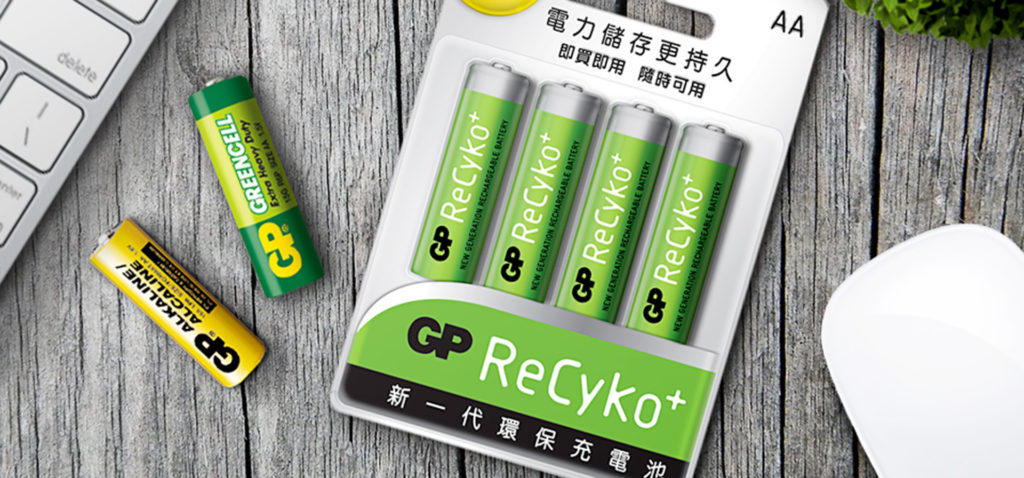
Rechargeable batteries are better for the environment than standard ones
WINTER HEADTORCH USE
In really cold conditions there are two main considerations. One is operating the headtorch with gloved fingers. The best button set-up we’ve tried is the Petzl Nao’s square knob, which is super easy to feel and operate. Unfortunately a lot of headtorch controls are super fiddly with gloves – check before buying, it’ll save hassle later, and if you have a zoomable lens, make sure that works with gloves too. The other issue when things get really cold, is that the chemical reactions that take place inside batteries slow down and reduce burn time and output. The best answer to this is a torch with a battery pack on an extended lead that you can carry close to your core in an inside pocket. The battery stays warm, burn times are close to normal. Sorted. Bear in mind that different battery technologies react differently to extreme cold. Lithium-based cells are more resistant than others, but will still drop-off as things get properly cold, think -10˚C and below.
Gearhead Takeaway – If you’re planning on using your headtorch for winter mountaineering or similar, make a point of trying it with thick gloves before buying.
THINGS THAT GO WRONG WITH HEADTORCHES
Gearhead was once told by a top expedition mountaineer that he always took four or so headtorches with him on multi-day trips because they always break. So what goes wrong? Weather resistance for one thing. Few headtorches are properly waterproof, most are simply certified splash resistant, and if water does get into the insides, it causes shorts and corrosion. There are some waterproof options out there, but surprisingly few. Connections and wires fatigue and break. This is a particular problem with headtorches using separate battery boxes rather than all-in-one units. They distribute weight evenly and allow for a remote, cold-friendly battery pack, but the wiring is one more thing to go wrong. Also things to go wrong are covers over USB ports which invariable fall off and leave the port exposed.
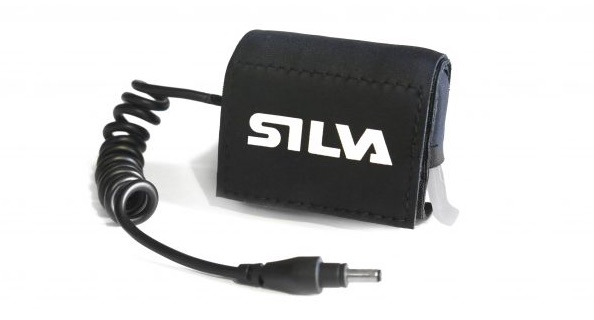
Leads and connectors can fail with lots of use
Last but not least, my personal gripe with pretty much every headtorch on the market is the one-way lighting sequence common to most torches – think: low/medium/high/off. The problem is that there’s no way of reducing light output without cycling upwards through the settings including off. Result: you can inadvertently plunge yourself into blackness while moving fast, maybe because you simply wanted to adjust the angle of your headtorch. Infuriating. Could someone please produce a light that goes down as well as up?
Gearhead Takeaway – Big trip planned? Take more than one lighting option.
AND FINALLY… MULTI-COLOURED AND RED LEDS – DO YOU NEED THEM?
Not talking about rear-mounted red LEDs as long as you can turn them on and off easily, more the ones up front. The rationale is that they don’t ruin your night vision, which is great if you’re playing soldiers and need to read a map – green / blue LEDs are supposed to do something similar – but they only really produce enough light to read by. A big plus is that they’re considerably less annoying to anyone you accidentally dazzle in the process. If you want to use the red LED to maintain your night vision, make sure the torch you buy will switch back on in red mode rather than having to be cycled through or you’re wasting your time.
Gearhead Takeaway – not an essential in our book, but handy for avoiding annoyance and preserving night vision if you need to.


